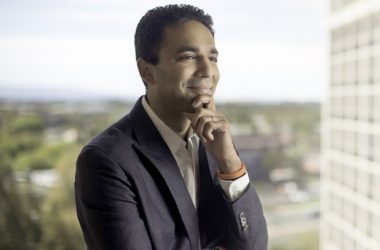 SAP executives provided new details about the company’s plan to make the HANA in-memory database the focus of a sweeping reinvention of its software architecture during an event in Boston yesterday.
SAP executives provided new details about the company’s plan to make the HANA in-memory database the focus of a sweeping reinvention of its software architecture during an event in Boston yesterday.
HANA, which is the brainchild of company founder Hasso Plattner and technology chief Vishal Sikka, was initially introduced in mid-2010 as a platform for running analytic workloads much faster than traditional databases.
The system holds data to be processed in RAM instead of reading it off of disks, providing a boost in performance that SAP has claimed is significant, if not dazzling.
But SAP soon began discussing HANA’s ability to handle transactional workloads from ERP (enterprise resource planning) and other types of applications, and positioning it as an eventual replacement for products like Oracle’s flagship database.
“There is an incredibly exciting opportunity in front of us to build totally new applications,” Sikka said during a keynote address on Tuesday at the company’s Influencer Summit event.
Sikka displayed a slide depicting the future HANA-powered software stack.
HANA and related lifecycle and infrastructure services sat on the bottom, topped first by application services; then ABAP and Java platform services; then development environments; and finally applications built by SAP and third-party vendors.
SAP is seeing some momentum on the last front, announcing on Tuesday a number of HANA-related initiatives with middleware and analytics vendor Tibco, ERP provider UFIDA, BI (business intelligence) visualisation vendor Tableau and Jive Software, which is known for its enterprise social networking offerings.
Going forward, SAP intends to have a “fully open ecosystem” for HANA, according to Sikka.
That makes sense, of course, given that HANA is a relatively new product that has a great deal of catching up to do with Oracle and others. Still, another SAP executive made a bullish prediction on Tuesday during a session after Sikka’s talk.
“Mark my words. By 2015, we’re going to be the number-two database company in the market,” said Steve Lucas, global GM and senior executive, business analytics and technology. “I know who we have to pass. They’re not inconsequential companies. It’s going to take us years and a lot of engineering to get there, but we will.”
“SAP will also look to form partnerships with ISVs (independent software vendors) who will embed HANA in products,” Lucas said.
Another good way for SAP to make some headway toward that goal would be to add HANA support for its core Business Suite software, many implementations of which now run on Oracle.
That work is ongoing, and while no concrete date has been targeted for completion, the market can expect an update at next year’s Sapphire conference, SAP deputy CTO Sethu M said. “This is a key project. We are making progress.”
SAP hasn’t decided whether it will also sell HANA as a standalone database, Sikka said.
In the meantime, SAP recently hit a milestone with HANA, topping US$100 million in sales, Sikka revealed during his keynote. HANA is being sold in appliance form by a number of hardware vendors. The $100 million figure refers solely to software license revenue going to SAP, Sikka said.
“Another telling indication of HANA’s success is the fact that customers in every region around the world have made second purchases of it,” Sikka said.
“CSC is in the process of implementing HANA,” said David McCue, the company’s VP and CIO. “The first production instance will involve about 1TB of data, but CSC is still figuring out exactly what types of jobs it plans to run,” he added.
HANA is “a young product,” but also a viable one, according to McCue. “CSC grew confident enough to buy in after it performed a number of implementations on behalf of clients,” he said.
McCue offered a measured view of SAP’s long-term plan for HANA. “If materially realised, it will have a very good return,” he said. “Certainly HANA has demonstrated in its current version that it has enough substance to make it worth looking at. But like any visions that stretch over several years, events will occur that will cause tweaking of it as we go.”
Also Tuesday, SAP touched upon its cloud software strategy, which was recently shaken up by its $3.4 billion purchase of SuccessFactors. The on-demand HCM (human capital management) vendor’s CEO, Lars Dalgaard, will be put in charge of SAP’s cloud business once the deal closes.
The acquisition came after SAP had spent a few years fine-tuning exactly how it wanted to approach cloud-based software. This is not a small task for vendors such as SAP, which are dependent on the on-premise software model and its predictable, lucrative perpetual-license-plus-annual-maintenance revenue stream, a construct upended by the subscription pricing common in the cloud.
“But SAP still has time to figure it out, and SuccessFactors’ experience will be an asset,” co-CEO Jim Hagemann Snabe said during a keynote address. “80% of large customers have not made up their minds about their cloud strategy, and they think in private cloud terms. You see only the edge applications outsourced to public cloud services for now.”
“The combination of our assets and SuccessFactors moves us from a company that has been trying to get it right … to one that will accelerate rapidly in this world,” he added. “We’re now going from a defensive mode to an offensive mode.”





